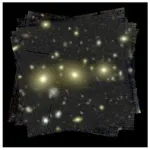(Press-News.org) Currently, industrial processes in the U.S. account for approximately a third of the country’s carbon dioxide emissions – even more than the annual emissions from passenger vehicles, trucks, and airplanes combined. Decarbonizing this sector is a challenging but vital step in mitigating impacts on our future climate.
Researchers at Stanford Engineering have designed and demonstrated a new type of thermochemical reactor that is capable of generating the immense amounts of heat required for many industrial processes using electricity instead of burning fossil fuels. The design, published Aug. 19 in Joule, is also smaller, cheaper, and more efficient than existing fossil fuel technology.
“We have an electrified and scalable reactor infrastructure for thermochemical processes that features ideal heating and heat-transfer properties,” said Jonathan Fan, an associate professor of electrical engineering at Stanford and senior author on the paper. “Essentially, we’re pushing reactor performance to its physical limits, and we’re using green electricity to power it.”
Heating with induction
Most standard thermochemical reactors work by burning fossil fuels to heat a fluid, which then flows into pipes in the reactor – like a boiler sending hot water to cast iron radiators in an old house, but with better insulation and at much higher temperatures. This requires a fairly large amount of infrastructure and there are many opportunities to lose heat along the way.
The new electrified reactor uses magnetic induction to generate heat – the same sort of process used in induction stoves. Instead of having to transport heat through pipes, induction heating creates heat internally within the reactor, by taking advantage of interactions between electric currents and magnetic fields. If you wanted to inductively heat up a steel rod, for example, you could wrap a wire around it and run an alternating current through the coil. These currents create an oscillating magnetic field which, in turn, induces a current in the steel. And because steel is not a perfect conductor of electricity, some of that current turns into heat. This method effectively heats the whole piece of steel at the same time, rather than creating heat from the outside in.
Adapting induction heating for the chemicals industry is not as easy as just turning up the heat. Industrial reactors need to evenly create and distribute heat in a three-dimensional space and be much more efficient than the average stovetop. The researchers determined that they could maximize their efficiency by using particularly high frequency currents, which alternate very quickly, in conjunction with reactor materials that are particularly bad conductors of electricity.
The researchers used new, high-efficiency electronics developed by Juan Rivas-Davila, an associate professor of electrical engineering and co-author on the paper, to produce the currents they required. They then used those currents to inductively heat a three-dimensional lattice made of a poorly conducting ceramic material in the core of their reactor. The lattice structure is just as important as the material itself, Fan said, because the lattice voids artificially lower the electrical conductivity even further. And those voids can be filled with catalysts – the materials that need to be heated to initiate chemical reactions. This makes for even more efficient heat transfer and means the electrified reactor can be much smaller than traditional fossil fuel reactors.
“You’re heating a large surface area structure that is right next to the catalyst, so the heat you’re generating gets to the catalyst very quickly to drive the chemical reactions,” Fan said. “Plus, it’s simplifying everything. You’re not transferring heat from somewhere else and losing some along the way, you don’t have any pipes going in and out of the reactor – you can fully insulate it. This is ideal from an energy management and cost point of view.”
Electrified industry
The researchers used the reactor to power a chemical reaction, called the reverse water gas shift reaction, using a new sustainable catalyst developed by Matthew Kanan, a professor of chemistry at Stanford and co-author of the paper. The reaction, which requires high heat, can turn captured carbon dioxide into a valuable gas that can be used to create sustainable fuels. In the proof-of-concept demonstration, the reactor was over 85% efficient, indicating that it converted almost all electrical energy into usable heat. The reactor also demonstrated ideal conditions for facilitating the chemical reaction – carbon dioxide was converted to usable gas at the theoretically predicted rate, which is often not the case with new reactor designs.
“As we make these reactors even larger or operate them at even higher temperatures, they just get more efficient,” Fan said. “That’s the story of electrification – we’re not just trying to replace what we have, we’re creating even better performance.”
Fan, Rivas-Davila, Kanan, and their colleagues are already working to scale up their new reactor technology and expand its potential applications. They are adapting the same ideas to design reactors for capturing carbon dioxide and for manufacturing cement, and they are working with industrial partners in the oil and gas industries to understand what those companies would need to adopt this technology. They are also conducting economic analyses to understand what system-wide sustainable solutions would look like and how they could be made more affordable.
“Electrification affords us the opportunity to reinvent infrastructure, breaking through existing bottlenecks and shrinking and simplifying these types of reactors, in addition to decarbonizing them,” Fan said. “Industrial decarbonization is going to require new, systems-level approaches, and I think we’re just getting started.”
For more information
Fan is a member of Stanford Bio-X and the Wu Tsai Neurosciences Institute. Rivas is a member of the Stanford Cardiovascular Institute and the Wu Tsai Neurosciences Institute. Kanan is a member of Stanford Bio-X and the Maternal & Child Health Research Institute.
Additional Stanford co-authors of this research include visiting scholar Pinak Mohapatra; postdoctoral researcher Chenghao Wan; and graduate students Calvin H. Lin, Zhennan Ru, Connor Cremers, Dolly L. Mantle, Kesha Tamakuwala, and Ariana Höfelmann.
This work was funded by the Stanford Doerr School of Sustainability Accelerator, the National Science Foundation, the Gates Millennium Scholarship, and the Stanford Graduate Fellowship.
END
Electric reactor could cut industrial emissions
2024-08-19
ELSE PRESS RELEASES FROM THIS DATE:
Causal relationship between PECAM-1 level and cardiovascular diseases
2024-08-19
https://www.scienceopen.com/hosted-document?doi=10.15212/CVIA.2024.0032
Announcing a new article publication for Cardiovascular Innovations and Applications journal. Platelet endothelial cell adhesion molecule (PECAM-1) is present in the vascular endothelium and plays important roles in various biological processes. Several recent studies have reported associations between PECAM-1 and certain subtypes of cardiovascular diseases (CVDs). However, further research is necessary to clarify the causal effects of PECAM-1 on CVDs.
To determine whether PECAM-1 and CVDs are causally ...
The plausible role of vascular adhesion molecules in cardiovascular diseases
2024-08-19
https://www.scienceopen.com/hosted-document?doi=10.15212/CVIA.2024.0046
Announcing a new article publication for Cardiovascular Innovations and Applications journal. Vascular Adhesion Molecules (VAMs) appear to play important roles in the development of Cardiovascular Diseases (CVD). The roles of these molecules in mediating inflammation, endothelial dysfunction, and plaque formation suggest that they may be important as both biomarkers and therapeutic targets. Understanding and targeting these molecules are hoped to substantially contribute to ...
Whole-exome sequencing identifies three novel TTN variants in Chinese families with dilated cardiomyopathy
2024-08-19
https://www.scienceopen.com/hosted-document?doi=10.15212/CVIA.2024.0040
Announcing a new article publication for Cardiovascular Innovations and Applications journal. Dilated cardiomyopathy (DCM), a severe heart disease, is the leading cause of heart failure and sudden cardiac death worldwide. DCM is defined by a dilated and deficient systolic left ventricle (LV) and is a major risk factor for morbidity and mortality worldwide. DCM progression can be ascribed to genetic and non-genetic factors, including hypertension, infectious agents, toxins, and drugs.
Sarcomere genes play crucial roles in myocardial cells’ physical structure and physiological function. Various cardiomyopathies ...
Key biofuel-producing microalga believed to be a single species is actually three
2024-08-19
MEDIA INQUIRES
WRITTEN BY
Laura Muntean
Ashley Vargo
laura.muntean@ag.tamu.edu
601-248-1891
FOR ...
Simple alternative criteria identify people with the most to gain from lung cancer screening
2024-08-19
Embargoed for release until 5:00 p.m. ET on Monday 19 August 2024
Annals of Internal Medicine Tip Sheet
@Annalsofim
Below please find summaries of new articles that will be published in the next issue of Annals of Internal Medicine. The summaries are not intended to substitute for the full articles as a source of information. This information is under strict embargo and by taking it into possession, media representatives ...
For some older adults with kidney failure, dialysis may not be the best option
2024-08-19
Whether dialysis is the best option for kidney failure and, if so, when to start, may deserve more careful consideration, according to a new study.
For older adults who were not healthy enough for a kidney transplant, starting dialysis when their kidney function fell below a certain threshold — rather than waiting — afforded them roughly one more week of life, Stanford Medicine researchers and their colleagues found.
More critically, perhaps, they spent an average of two more weeks in ...
UC Davis Health develops a real-time action plan to help patients with lung disease cope with wildfire smoke
2024-08-19
A multidisciplinary team of UC Davis Health experts are calling on health systems to create wildfire preparedness action plans to support patients with preexisting respiratory diseases. They are urging providers to proactively put in place interventions to mitigate the effects of poor air quality from smoke.
Their article, published in the Journal of the COPD Foundation, identifies the needs of high-risk populations when affected by wildfire smoke. It outlines an action plan for health systems to help these groups with the burdens of poor air quality from wildfires.
“Patients ...
MIT study explains why laws are written in an incomprehensible style
2024-08-19
Legal documents are notoriously difficult to understand, even for lawyers. This raises the question: Why are these documents written in a style that makes them so impenetrable?
MIT cognitive scientists believe they have uncovered the answer to that question. Just as “magic spells” use special rhymes and archaic terms to signal their power, the convoluted language of legalese acts to convey a sense of authority, they conclude.
In a study that will appear in the journal of the Proceedings of the National Academy of Sciences, the researchers found that even non-lawyers use this type of language when asked to write laws.
“People seem to understand that there’s ...
Understanding of early life ecosystems highlighted in new publication
2024-08-19
STARKVILLE, Miss.—With a new understanding of past life on the planet through fossils, a Mississippi State biological sciences faculty member is helping researchers better predict Earth’s future.
In a new paper published in July in the esteemed peer-reviewed journal Proceedings of the National Academy of Sciences, Donald L. Hall Professor of Biology Matthew Brown unearths a specific area of under-studied fossils: microbial eukaryotes—more specifically, testate amoebae from 750 million ...
New research finds scalable mindfulness interventions delivered via telehealth improve pain and well-being for veterans with chronic pain
2024-08-19
MINNEAPOLIS/ST. PAUL (08/19/2024) — Mindfulness-based interventions delivered via telehealth in a scalable format can improve pain and overall well-being among veterans with chronic pain, according to new research published today in JAMA Internal Medicine.
In a randomized clinical trial, researchers aimed to test the effectiveness of two eight-week telehealth mindfulness-based interventions (MBIs) designed to be scalable and widely implemented in healthcare systems. MBIs help people pay attention non-judgmentally in the present moment and often involve practices like meditation, breathing exercises or gentle movement.
“Although mindfulness interventions are evidence-based ...



